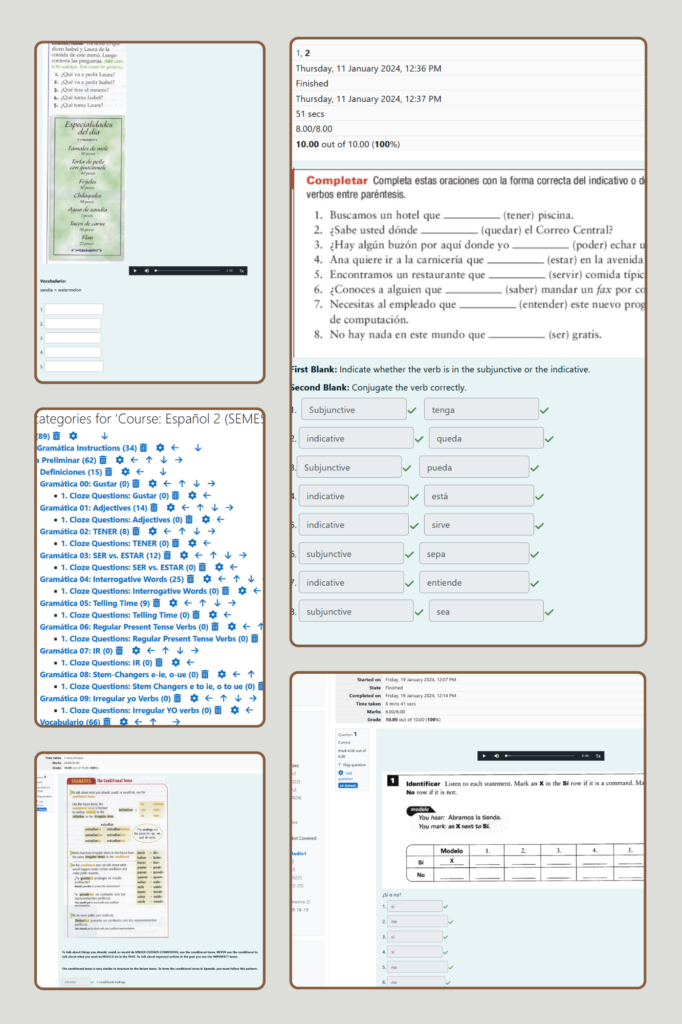Have you ever felt overwhelmed by the endless task of grading? In 2012, I found myself in that very situation. The online site I was using for grading went out of business, and I seriously considered quitting teaching. That site handled only about 10% of what Moodle could do, yet I thought it was indispensable. My journey from despair to discovery is one I hope will inspire and assist other educators.
Discovering Moodle
My introduction to Moodle came from an unexpected source: a former student. He was taking a community college course that used an LMS similar to Moodle. I noticed his online tests and quizzes were already graded. Intrigued, I wondered if I could implement something similar in my classes. After some research, I discovered Moodle.
I spent weeks and months getting myself set up with Moodle. I found a Moodle host that accommodated single teacher accounts and was much cheaper than other Moodle Partners. Setting up an account was easy, but mastering Moodle was a different story. I spent countless hours learning its features and creating a rudimentary class. Those first few years were rough, with new challenges cropping up almost weekly. At times, it felt too hard, but I persevered. Over time, I faced and overcame numerous challenges.

Practical Benefits of Moodle
Automated Grading: One of the biggest game-changers was the “quiz” module in Moodle. I created self-graded activities, including speaking activities where students graded themselves. Accountability was key. I often used activities from Spanish textbooks, screen capturing them and programming the answers using a text file. It took a while to perfect, but the flexibility in answer programming was invaluable. Most of my activities, whether writing, reading, or speaking, are created using the “quizzes” module in Moodle. I utilize the “cloze” question type extensively and have built large, organized question banks for vocabulary, definitions, and grammar topics.

Instant Feedback: With Moodle, students receive instant feedback. Once they complete an activity, it’s automatically recorded in the gradebook. They can see their mistakes (if allowed) and redo activities (if permitted). The grade reports are incredibly detailed, providing transparency for students and parents alike. I love that I never lose work, and students are held accountable for everything they do. Parents appreciate the direct access to their children’s grades.

Daily Agenda Creation: Creating a daily agenda became a breeze. Once I had all my activities organized by chapter, I could quickly set up daily agendas. I’d copy activities for a chapter, then adjust the day’s agenda based on what we’d covered. This process took about five minutes and could usually be done during class. Eventually, I found myself with almost no grading or planning to do during my prep period. All grades were automatically inputted into the gradebook, and any mistakes could be corrected instantly.

Reduced Screen Time: Recently, I started projecting activities on the board, having students enter their answers in composition books. We’d go over answers together, and with 5-10 minutes left in class, students would enter their answers into Moodle. This approach kept them engaged without being glued to their screens and allowed them to check their work for accuracy.

Secure Testing: For major assessments, I use Moodle’s Safe Exam Browser. It’s the most secure online testing platform, though it requires students to have a Mac or PC (no Chromebooks or iPads). There’s a learning curve, but once mastered, it’s a powerful tool. I’ll share tips to make it easier in future posts.
Conclusion
These are just some of the benefits of using Moodle. I also integrate other tools like Quizlet and Gimkit, which complement Moodle beautifully. I’m excited to share more about these tools and how they can revolutionize your teaching experience. Join me on this journey to make teaching more efficient and enjoyable.
For a quick overview of everything discussed in this post, check out this video where I explain how Moodle has transformed my teaching experience and how it can potentially transform yours.

